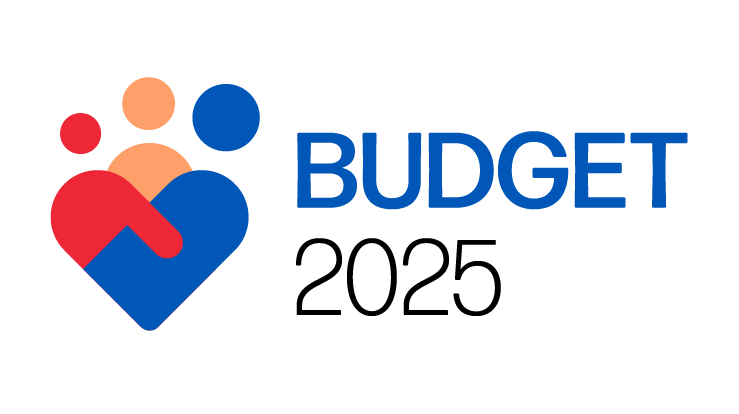The 4% Rule Reimagined: New Strategies for Sustainable Retirement Income
Challenge the traditional 4% withdrawal rule and propose alternative methods for generating retirement income.
The 4% rule has long been a cornerstone of retirement planning. It suggests that retirees can withdraw 4% of their savings annually, adjusted for inflation, without running out of money over a 30-year retirement.
However, this rule has its limitations, especially in the context of Singapore's evolving retirement landscape. With rising living costs, longer life expectancies, and unique financial challenges, Singaporean retirees must adopt more adaptable strategies for sustainable retirement income.
We explore innovative approaches tailored to the specific needs of Singaporean retirees, ensuring a secure and fulfilling retirement.

Understanding the 4% Rule and Its Shortcomings
The 4% rule originated in the early 1990s from research known as the "Trinity Study." It was designed to provide a guideline for how much retirees could safely withdraw from their portfolios. However, this rule is based on several assumptions that may not hold true in Singapore’s unique environment.
Limitations of the 4% Rule
- Assumptions: The rule assumes a balanced portfolio of stocks and bonds, historical market returns, and a fixed withdrawal rate. In Singapore, factors such as local economic conditions and market volatility can significantly impact these assumptions.
- Sequence of Returns Risk: This risk refers to the potential negative impact on a portfolio when withdrawals occur during market downturns. In Singapore's volatile market environment, this risk is particularly pronounced.
- Inflation Risk: The cost of living in Singapore continues to rise. The 4% rule may not adequately account for inflation rates that exceed historical averages, especially in healthcare and housing.
These limitations necessitate a rethinking of retirement income strategies to ensure sustainability and security for Singaporean retirees.
Rethinking Retirement Income Strategies for Singaporeans
Leveraging CPF
The Central Provident Fund (CPF) is a vital tool for retirement planning in Singapore.
- Maximising CPF Savings: Retirees should consider strategies such as transferring funds from the Ordinary Account (OA) to the Special Account (SA) to benefit from higher interest rates—up to 5% for SA funds.
- Understanding CPF Policies: Staying informed about changes in CPF policies and interest rates can help retirees make better decisions regarding their withdrawals and investments.
- Here are some key updates as of October 2024:
CPF Changes (Effective January 2025):
- Closure of Special Account (SA): Beginning January 2025, the CPF Special Account will be closed for members aged 55 and older. The funds will be transferred to their Retirement Account (RA), while any amounts exceeding the Full Retirement Sum (FRS) will move to the Ordinary Account (OA), which offers a lower interest rate.
- Increase in Enhanced Retirement Sum (ERS): In 2025, the Enhanced Retirement Sum will be raised to four times the Basic Retirement Sum (BRS). This adjustment allows for increased contributions and potentially higher payouts through CPF LIFE.
- Matched Retirement Savings Scheme (MRSS): Starting in 2025, the MRSS will feature a higher annual matching grant cap of up to S$2,000, with a lifetime cap of S$20,000. However, please note that cash top-ups under the MRSS will no longer qualify for tax relief.
- Increased CPF Contributions for Older Workers: Contribution rates for workers aged 55 to 65 will rise by 1.5% in 2025, with 0.5% contributed by employers and 1% by employees. This change is intended to enhance retirement savings for older workers.
Investing in Singapore's Market
Investing locally offers numerous opportunities:
- Stock Market: Singapore's stock market provides access to various sectors. Diversifying investments across different asset classes can mitigate risks associated with market fluctuations.
- Property Market: Real estate remains a popular investment avenue. However, it is pivotal to assess market conditions and understand potential returns versus risks.
Considering Overseas Investments
While local investments are essential, overseas markets can offer diversification:
- Benefits and Risks: Investing abroad can yield higher returns but comes with risks such as currency fluctuations and geopolitical factors.
- Tax Implications: Understanding tax liabilities associated with overseas investments is crucial to avoid unexpected costs.
Alternative Retirement Income Strategies
The Bucket Strategy
The bucket strategy involves segmenting retirement savings into different "buckets" based on time horizons:
- Short-Term Bucket: Funds needed within the first few years should be kept in low-risk assets.
- Long-Term Bucket: Investments intended for later years can be allocated to higher-risk assets that have greater growth potential.
This approach helps manage risk while ensuring liquidity when needed.
The Variable Percentage Withdrawal Rate
Instead of adhering strictly to the 4% rule, retirees can adjust their withdrawal rates based on portfolio performance:
- Dynamic Withdrawals: This method allows withdrawals to fluctuate according to market conditions. For instance, withdrawing less during downturns can preserve capital for future years. Conversely, when markets perform well, retirees can afford to withdraw slightly more.
Approaches like the Guardrail Strategy or Guyton-Klinger Rules define specific thresholds for increasing or decreasing withdrawals, aiming to sustain the portfolio through both good and bad markets. These dynamic approaches reduce the risk of running out of funds and create a buffer against economic uncertainties.
The Guaranteed Income Approach
Guaranteed income sources provide financial security:
- Annuities and Pension Plans: These products can offer steady income streams throughout retirement. However, it’s essential to weigh their benefits against potential downsides, such as limited liquidity. For instance, retirees in Singapore might consider CPF LIFE, which guarantees monthly payouts based on the amount in the CPF Retirement Account.
- Local Regulations: Understanding local regulations governing these products is crucial for making informed decisions.

Practical Tips for Sustainable Retirement in Singapore
Diversification
A diversified portfolio with a mix of stocks, bonds, real estate, and alternative investments like S- REITs (Real Estate Investment Trusts) or commodities can cushion against market volatility.
By balancing riskier assets like equities with safer ones like government bonds or money market instruments, retirees can build a more resilient portfolio. Diversification also helps capitalise on different asset performance cycles.
Regular Rebalancing
Over time, market movements can cause a portfolio to deviate from its intended allocation. Regular rebalancing helps realign the portfolio with the retiree’s risk tolerance.
For instance, if equities perform well, their weight in the portfolio may increase, pushing up risk levels. Selling some equities to buy bonds can restore the balance. Many financial advisors recommend rebalancing annually or when asset allocations deviate by a significant percentage (like 5-10%).
Tax-Efficient Strategies
The Supplementary Retirement Scheme (SRS) in Singapore allows contributions that are eligible for tax relief, reducing taxable income in the short term. This strategy not only provides immediate tax savings but also offers flexibility in investing in a range of financial products.
Given the growing importance of tax-efficient planning, retirees might pair SRS with other CPF schemes to build a balanced retirement income strategy while optimising their tax liabilities.
Financial Planning
Engaging with a financial advisor can provide personalised insights tailored to individual circumstances:
- Creating a Retirement Plan: A professional can help outline clear steps toward achieving retirement goals.
- Regular Reviews: Periodic reviews of your financial plan ensure it remains relevant amidst changing economic conditions or personal circumstances.
Conclusion
While the traditional 4% rule has served many retirees well, it is increasingly inadequate for navigating the complexities of modern retirement planning in Singapore. Adopting flexible strategies that consider local economic conditions and personal circumstances is essential for achieving sustainable retirement income.
Singaporeans need to seek professional advice tailored to their unique situations. By taking proactive steps today—whether through maximising CPF contributions or diversifying investments—retirees can secure a fulfilling future. A well-planned retirement is not just about finances; it's about enjoying life’s next chapter with peace of mind and confidence.
Let us know what you think about this topic, and what do you want to hear next.
You can now be our community contributor and make a pitch to have your favourite personality be on our show.
Join our community group and drop us your insights on this topic.

-3.png?width=50&name=Square%20(2)-3.png)










Let us know what you think of this post